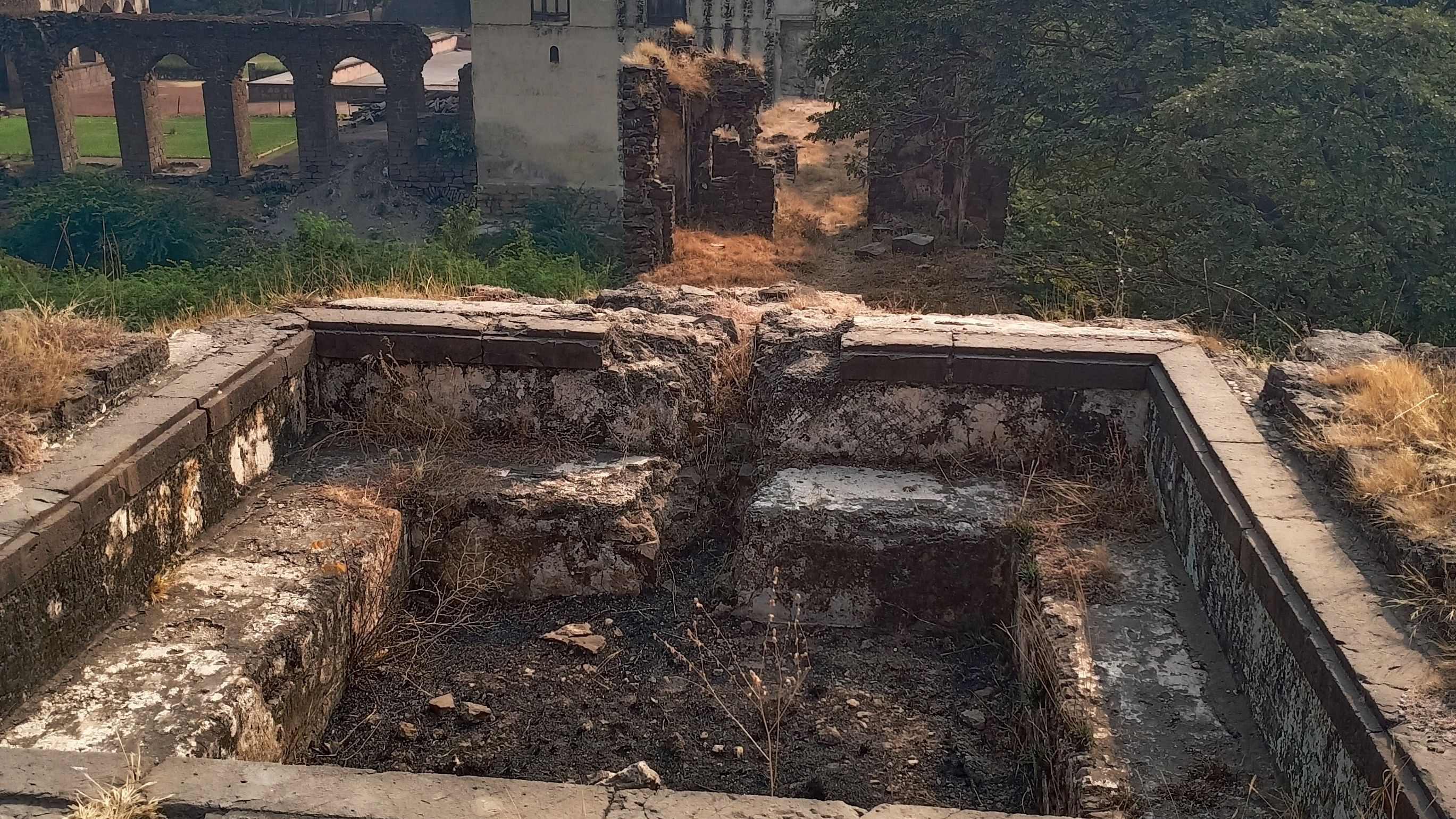
A dilapidated water structure close to the Jahaz Mahal in Vijayapura district.
Credit: Photos by author
In a span of nearly two centuries, the Adil Shahi sultanate of Bijapur brought great contributions to the fields of art and architecture in the region. Arabic, Persian, Dakhani Urdu, Kannada and Marathi were patronised by the rulers as distinct spoken and literary languages.
The Adilshahi era is also significant due to the arrival of many Sufis to the region. Their teachings of universal brotherhood and tolerance paved the way for syncretic Indo-Islamic culture in the region.
Paintings inside the Asar Mahal and in the summer resorts and pavilions of the Adilshahi era stand testimony to the excellence of artists in the period. The detailed calligraphy in Arabic and Persian, etched on black basalt stones at Ibrahim Rauza, Malika-e Jahan mosque, Jal Mahal and Husaini Mahal and Quranic verses on the stucco plaster bring alive the dexterity of Adilsahi artisans and sculptors.
The Bijapur school of paintings reached its zenith during the rule of Sultan Ibrahim Adilshah II (1570-1627). The historic collection of miniature paintings, created by various artists of the Adilshahi court still exists today, some of them are well preserved in European museums.
Ibrahim Adilshah II, a famous sultan, was also a great aficionado of music and composed Kitab-e Navras, a collection of poetry. The Mushaira or the poetic symposium was believed to be born in Bijapur before it became a passion of North Indian monarchs and nawabs.
The architecture of Vijayapura is in itself unique, combining structural elements of Indian, Persian and Turkish Ottoman styles. The famous Gol Gumbaz was built by Muhammad Adilshah (1627-1656) and is described by many historians as a marvel of engineering. Similar is the Ibrahim Rauza, the resting place of Ibrahim Adilshah and members of his family.
Like stars in the sky, the city of Vijayapura is dotted with myriad monuments within and outside the city limits. The architecture typically represents the Indo-Islamic style. There were nine Sultans in total who held the helm of the Adil Shahi kingdom. The first was Yusuf Adil Shah (1450 AD – 1510 AD) and the last was Sikandar Adil Shah (1672 AD – 1686 AD).
September 12, 1686 AD marked the end of the Adil Shahi sultanate of Bijapur, which held the helm for nearly two centuries, from 1489 to 1686. It took around 18 months for Mughal forces to breach the fort. Aurangzeb marched into the frontiers, with great fanfare, from one of the entrances called ‘Fatah darwaza’, now referred to as the ‘Manguli base’, from the south of the city.
Today, there are 83 monuments in the city that are protected under the Ancient Monuments and Archaeological Sites and Remains Act by the Archaeological Survey of India. But hundreds of other structures have no such legal protection and lie abandoned. Vijayapura has the highest density of monuments after Delhi.
Today, the Kalyani Mahal, Jahaz Mahal, Sangeet Mahal, Naari Mahal, Firangi Mahal, Nartaki Mahal, many mausoleums, mosques, Sufi shrines, water pavilions and subterranean water-conducting systems stand in ruins. The mortar has fallen at many places, exposing the stones like pestilent wounds and is a reminder of the many monuments that will be forgotten if restoration is not undertaken.